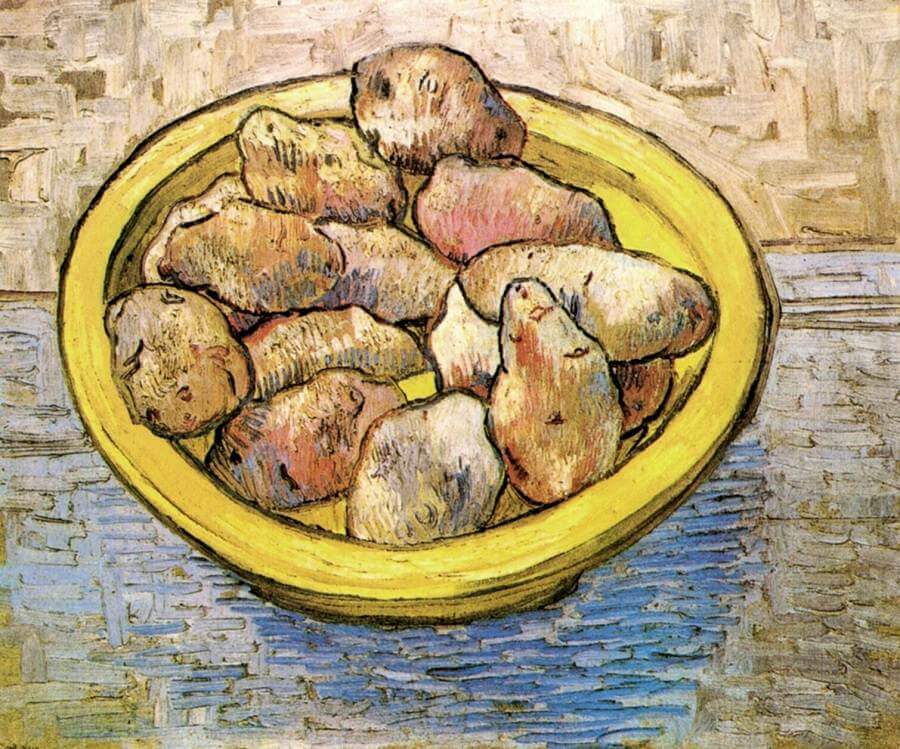Still Life with Potatoes, 1888 by Vincent van Gogh

Quite why Van Gogh chose Arles as his destination is unclear, though his enthusiasm for the south of France may have been partially fanned through Alphonse Oaudet's novel, Tartarin de Toroscon (1872). The comic story of an affable, bumbling hero along the lines of Don Quixote was set in Tarascon, a town nearby to Arles, and it was a tale that Van Gogh was familiar with.
On his arrival he threw himself into a frenzy of painting, and at first appears to have been content with allowing his work to consume his life. Though his art was developing in a new direction, there were still vestigial elements of his Dutch upbringing, and this still life in particular combines a Dutch echo with a new linear forcefulness. His romanticized social and political ideals that had inspired his early paintings of peasants at work could again be seen in some of his paintings done at Arles though in a less blatant manner. His landscapes included small figures busy working in the distance, though the landscape itself remained the motif with the peasant element now a subsidiary.




















